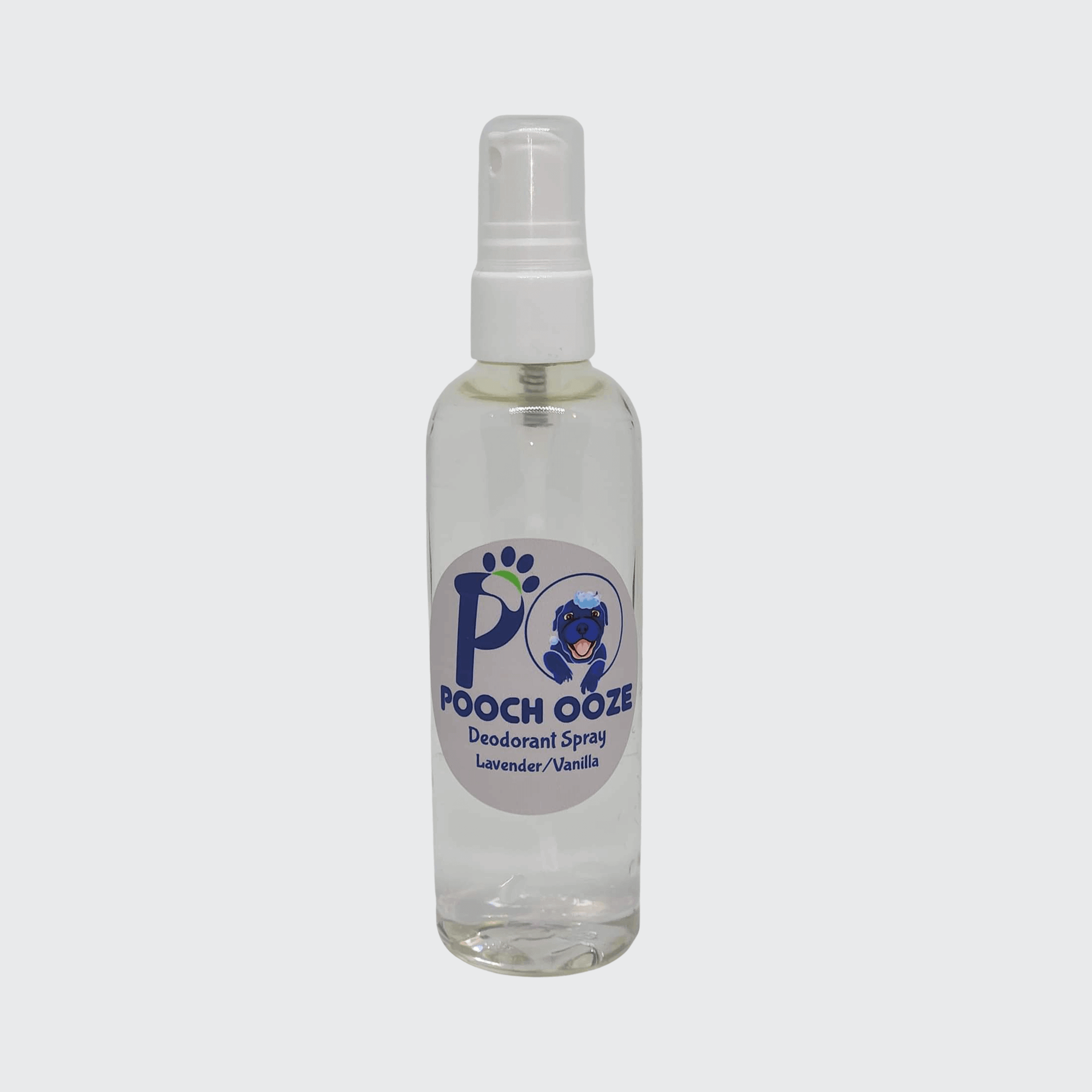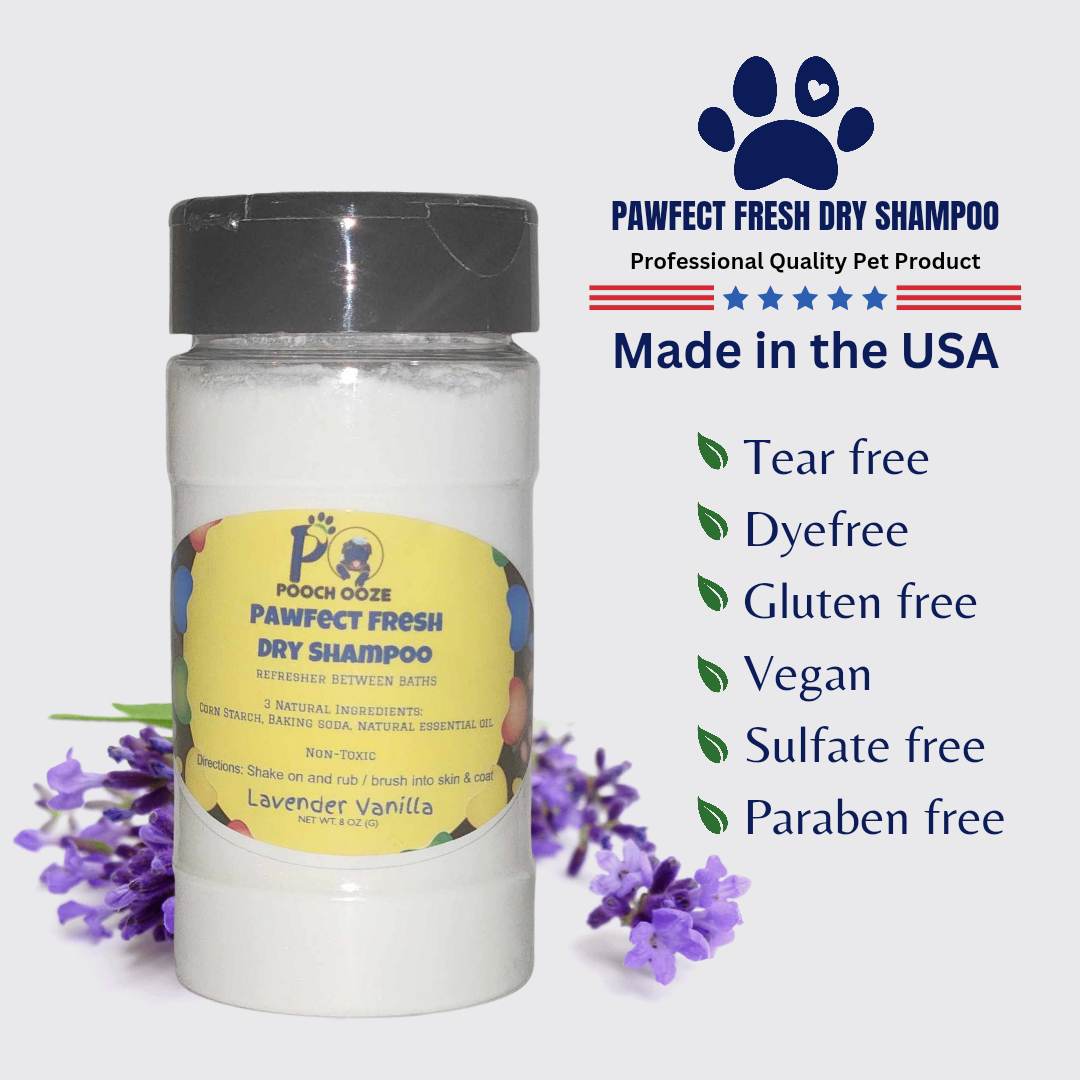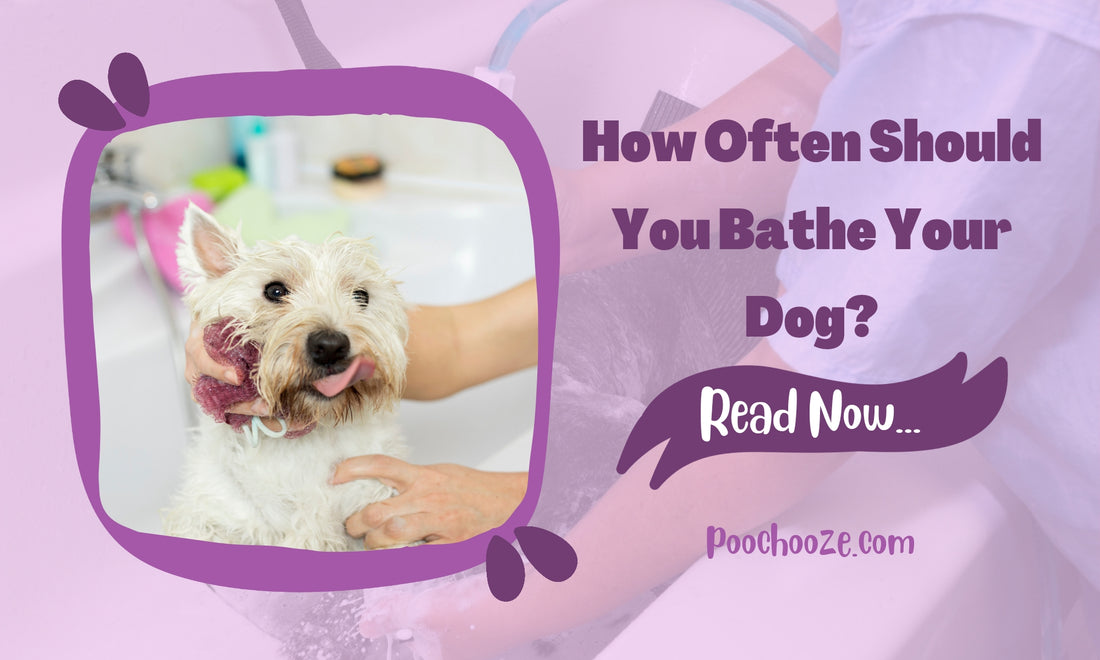If you're a proud dog owner, chances are you've wondered how often to bathe your furry friend. You're not alone! Many pet parents grapple with this question, unsure of the optimal washing frequency for their dogs. Fortunately, we're here to help answer that question and offer expert guidance on keeping your pup clean and healthy.
Regular baths are integral to maintaining your dog's hygiene and overall well-being; they should be an essential part of any grooming routine. However, frequent bathing can lead to skin dryness and other related issues. On the flip side, infrequent baths can result in an unpleasant odor emanating from our furry friends' coats or even dirty fur—what a mess!
So where do we draw the line? What is the ideal frequency for washing our beloved pets? Our team has garnered valuable insights into answering these questions through extensive research and consultation with experts in pet care.
Stay tuned as we dive into essential details regarding perfect bath timing. With us by your side, rest assured that you will have all the necessary information needed to keep your pup looking (and smelling) great!

How Often Should You Bathe Your Dog?
Factors such as breed, coat type, activity level, and lifestyle must be considered when determining how often to bathe your dog. Every furry friend is unique, so their washing regimen should also vary accordingly.
It's crucial to avoid over-bathing your dog, which will lead to the removal of natural oils found in their coat, which may result in dry skin or bald patches. Similarly, under-bathing can lead to the accumulation of grime and bacteria on their fur, resulting in possible health or odor issues.
There is no one-size-fits-all answer for how frequently dogs require a bath. However, our experienced team has come together to share some valuable insights that will help you make an informed decision about keeping your beloved pooch clean while ensuring optimal hygiene standards!
Importance of Regular Dog Bathing
Besides hygiene, bathing your furry friend has other benefits as well. It helps to remove dirt and debris from the coat, prevent matting and tangling of fur (which can be painful for dogs), and improve their overall appearance.
One of the critical reasons for regular baths is flea and tick prevention. Bathing with appropriate shampoos that contain natural ingredients like eucalyptus or lavender oil can repel fleas, ticks, and other parasites. Moreover, during a wash-time grooming session, you may notice any potential health concerns such as rashes or inflammation on its skin so that you can seek medical attention right away.
Baths are an essential part of maintaining your dog's hygiene while preventing unwanted pests from making themselves comfortable on their coats. However, frequency should be determined keeping in mind various different factors, allowing one to effectively incorporate bath time grooming into a routine tailored specifically for our canine companions!
Factors to Consider When Determining Bathing Frequency
Several factors can influence how often you should wash your dog, including their breed, coat type, activity level, and overall health. Here are some key considerations to keep in mind:

Breed and Coat Type
Different dog breeds have different coat types, which can affect the frequency of bathing. For example, in breeds like Siberian Huskies and Alaskan Malamutes with double coats, brushing to eliminate debris and dirt is normally sufficient, whereas baths are not needed as frequently. Conversely, dogs like Afghan Hounds or Shih Tzus who have long, flowing hair, can easily develop tangles that may need to be resolved through frequent bathing.
Finally, it's important to note that short-haired breeds such as Boxers and Beagles might require a reduced number of baths compared to their long-haired counterparts due to the mane needing less maintenance. If you're uncertain what your pet needs in terms of bathing frequency or how best to maintain its fur type for optimal health conditions, reach out for more information on which approach fits them perfectly.
Activity Level and Lifestyle
It's recommended to bathe your dog every 2-3 months as a baseline. However, this can vary based on the factors mentioned above. If you notice that your furry friend is starting to develop an odor or that their coat is visibly dirty and unkempt, it may be time for a bath, regardless of breed.
When bathing your dog, make sure to use products specifically tailored for pets (avoid human shampoos) and always consult with your veterinarian if there are any concerns about skin allergies or other conditions. By following these guidelines, you'll ensure that your furry companion stays clean and healthy!
Health and Skin Conditions
Remember, you don't want to strip away any natural oils from your dog's skin, as this can lead to dryness and irritation. Over-bathing is especially harmful if your dog has existing health or skin conditions like dermatitis or infections, which often require carefully chosen medicated shampoos for treatment.
As a responsible pet owner, watch out for any sign of itching, redness, bald patches, or dandruff on their coat and discuss with your vet how best to maintain skin health; regular grooming may be the best solution in some cases, while more specialized care might be needed in others. Your vet will provide guidance on how frequently to bathe them and what products are best suited depending on breed type and hair or coat length.
By keeping an eye out for changes in appearance as well as getting input from trusted professionals who know about animal physiology, it becomes easy to empower yourself with knowledge crucial to maintaining good animal hygiene habits that won’t compromise their overall wellbeing.

Debunking Common Myths:
There are several myths surrounding dog bathing that can lead to confusion. Let's debunk some of these myths to provide you with accurate information:
Myth: Dogs should be bathed every week.
Fact: Bathing your dog too frequently can strip their coat of essential oils and disrupt the natural pH balance of their skin, leading to dryness and irritation. In most cases, bathing your dog every 4-6 weeks is sufficient. However, the ideal frequency may vary depending on the factors mentioned earlier.
Myth: Dogs should not be bathed in the winter.
Fact: It's a common misconception that dogs should not be bathed during the winter months. While it's important to avoid bathing your dog in cold weather to prevent them from getting chilled, it's still essential to maintain their grooming routine throughout the year. You can bathe your dog indoors using warm water and provide them with a warm, dry environment to prevent hypothermia.
Best Practices for Bathing Your Dog:
Now that you have a clear understanding of the factors that influence bathing frequency and have debunked common myths, let's dive into some best practices for bathing your dog:
Use a Dog-Friendly Shampoo
As a dog owner, it is crucial to select the best shampoo for your furry friend. Using high-quality shampoo specifically formulated for dogs, like Pooch Ooze dog shampoo, is highly recommended due to its gentle nature on their skin and coat. It's important not to use human shampoos or soaps, as they can contain chemicals that might harm them. For this reason, always opt for shampoos explicitly designed as "dog-safe" or "pet-friendly" and avoid any that include sulfates, parabens, or artificial fragrances.
By doing this simple act of care, you can make sure your dog remains comfortable while keeping them clean and healthy at all times.
Brush Your Dog's Coat Before Bathing: Brushing your dog's coat before bathing can help remove loose fur, tangles, and mats, making the bathing process more effective. It also helps in distributing natural oils throughout the coat, keeping it healthy and shiny.
Use Lukewarm Water: Avoid using hot water as it can be uncomfortable and harmful to your dog's skin. Use lukewarm water to wet your dog's coat thoroughly, avoiding their eyes and ears.
Be Gentle: When applying shampoo and lathering your dog's coat, be gentle and avoid scrubbing too hard. Use your hands or a soft brush to work the shampoo into a lather, paying attention to areas that are prone to dirt and odor, such as the paws, underarms, and tail.
Rinse Thoroughly: Make sure to rinse your dog's coat thoroughly to remove all the shampoo residue. Leftover shampoo can cause skin irritation and dryness.
Dry Your Dog Properly: After rinsing, use a clean towel to gently pat your dog's coat dry. Avoid rubbing vigorously as it can tangle the fur. If your dog has a long coat, you may need to use a dog-specific blow dryer on a low setting to completely dry their coat and prevent matting.
Regular Grooming
In addition to regular bathing, regular grooming is essential for maintaining your dog's coat and overall hygiene. Regular brushing helps to remove loose fur, prevent matting, distribute natural oils, and keep your dog's coat clean and healthy. The frequency of brushing depends on your dog's coat type, but most dogs benefit from a daily or weekly brushing routine.
Trimming your dog's nails regularly is also important to prevent overgrowth, discomfort, and potential injury. Additionally, cleaning your dog's ears, brushing their teeth, and checking for fleas or ticks should be a part of your regular grooming routine to keep your dog's overall health in check.
Additional Tips for Dog Bathing
Here are some additional tips to keep in mind when bathing your dog:
• Use a non-slip mat or towel in the tub or basin to provide stability for your dog and prevent slips or falls.
• Avoid getting water or shampoo in your dog's eyes, ears, and mouth. Use a damp cloth to clean their face separately.
• Be patient and gentle when bathing your dog, especially if they are nervous or anxious. Use soothing tones and rewards to keep them calm and relaxed.
• If your dog has a thick or double coat, consider using a de-shedding tool or rake to remove loose fur before bathing.
• If your dog has sensitive skin, consider using a hypoallergenic or oatmeal-based shampoo to prevent irritation.
FAQs
Question: Can I use human shampoo on my dog?
Answer: It's not recommended to use human shampoo on dogs, as it can be too harsh for their sensitive skin. Always use a mild and dog-specific shampoo to avoid skin irritation.
Question: How should I prepare my dog for a bath?
Answer: Before bathing your dog, brush their coat to remove any loose fur and tangles. Trim their nails, and place a rubber mat in the bathtub to provide traction. Use lukewarm water and a gentle spray nozzle to wet their coat, and lather with dog shampoo. Rinse thoroughly and towel dry.
Question: What if my dog hates baths?
Answer: If your dog dislikes baths, you can try making the experience more enjoyable for them. Use treats, positive reinforcement, and a calm and soothing tone to help them feel relaxed. Gradually introduce them to the bath by starting with just water and gradually adding shampoo. If your dog continues to resist, you can consider using dry shampoo or seeking the help of a professional groomer.
Question: How do I know if I'm bathing my dog too often or not enough?
Answer: The ideal bathing frequency for your dog may vary based on their individual needs. If your dog's coat is dry, flaky, or itchy, it may indicate over-bathing. On the other hand, if your dog has a strong odor or visibly dirty coat, it may be a sign of inadequate bathing. Monitoring your dog's coat condition, skin health, and overall odor can help you determine if you need to adjust your bathing routine.
Question: Can I bathe my dog too frequently?
Answer: Yes, bathing your dog too frequently can strip their coat of essential oils and disrupt the natural pH balance of their skin, leading to dryness and irritation. It's best to follow a bathing schedule recommended by your veterinarian or bathe your dog every 4-6 weeks, unless they have specific grooming needs or skin conditions that require more frequent baths.
Question: My dog has a skin condition, how often should I bathe them?
Answer: If your dog has a skin condition, such as allergies or dermatitis, it's best to consult your veterinarian for a specific bathing schedule. They may recommend medicated shampoos or prescribe a different bathing frequency to help manage the condition.
Question: Can I bathe my dog during winter months?
Answer: Yes, you can bathe your dog during winter months, but it's important to avoid bathing them in cold weather to prevent them from getting chilled. You can bathe your dog indoors using lukewarm water and provide them with a warm, dry environment to prevent hypothermia.
Conclusion
In conclusion, grooming your dog is a critical aspect of their overall health and well-being. Besides regular bathing using mild and pH-balanced shampoo, brushing their fur to prevent matting, trimming their nails to avoid discomfort or injury, cleaning their ears to prevent infections, and brushing their teeth to avoid dental problems are essential. Also, flea and tick control should not be left out when it comes to maintaining healthy canine hygiene. Providing proper care for your furry friend by incorporating these grooming tips into your pet care routine will keep them clean, healthy, and happy. Remember that every breed has specific needs; therefore, talking with a veterinarian can help you tailor the best possible grooming routines for your dog's unique requirements.



